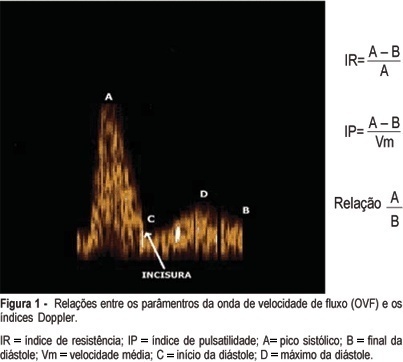Summary
Revista Brasileira de Ginecologia e Obstetrícia. 1999;21(6):323-326
DOI 10.1590/S0100-72031999000600004
Purpose: to offer new data for the conflicting reports which present different prognosis for patients with breast carcinoma, according to the timing of surgery in relation to the menstrual cycle. Patients and Methods: in a retrospective study on 451 premenopausal women with breast cancer, aged between 26 and 52 years, 130 cases were selected and followed for 60 months, at least. Sixty-eight were operated during the follicular phase and 62 in the luteal period, whose findings regarding clinical stages, axillary involvement and estrogen and progesterone hormonal receptor concentrations of the neoplasms were also analyzed. Results: the follow-up of 130 patients showed that 64.4% had a disease-free survival after five years and 43% exceeded 10 years. Subdividing the cases into 2 subgroups, according to the timing of surgery, the survival rates were different, 58.8% at 5 and 36.7% at 10 years, when the operation occurred in the follicular phase, and 70.9% and 50%, at 5 and 10 years, respectively, during the luteal period. Conclusions: in this study, the patients operated in the luteal phase reached higher survival rates than the women operated during the follicular period. However, these values were lower than those displayed by the classic prognostic factors of axillary involvement and tumor size.
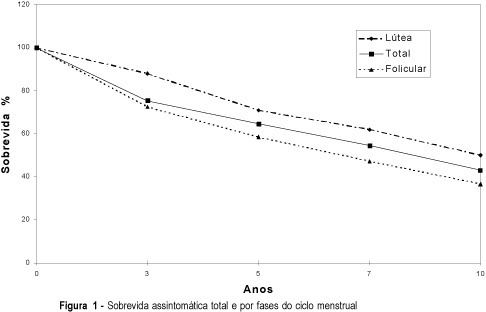
Summary
Revista Brasileira de Ginecologia e Obstetrícia. 2013;35(7):323-330
DOI 10.1590/S0100-72032013000700007
PURPOSE: To estimate the prevalence and identify the factors associated with delayed pap smear test of the cervix (carried out more than three years ago) among mothers with sons under two years of age, who attended the prenatal care. METHODS: Cross-sectional, population-based household survey. Women with sons under two years old, living in the northern area of the city of Juiz de Fora (MG), Brazil, were interviewed. Stratification and clustering were used in a complex sampling procedure. We applied a survey questionnaire to capture women's demographic and socioeconomic characteristics of women and information about prenatal and practices for preventing cancer of the cervix. For statistical analysis of the possible bivariate association of factors, we used χ² test and a logistic regression model with the explanatory variables that had a significance less than or equal to 0.05 in the bivariate analysis. RESULTS: We found a delayed test prevalence of 26.6% (95%CI 21.3 - 32.6), including women who were never submitted to the exam. The variables associated with the non-adherence to the examination within the stipulated time were: to be married (OR 0.5; 95%CI 0.2 - 0.9), and divorced/widowed (OR 0.1; 95%CI 0.02 - 0,8), having performed gynecological examination in prenatal care (OR 0.3; 95%CI 0.1 - 0.6) and number of prenatal visits (OR 0.09; 95%CI 0.03 - 0.25 for more than 11 visits), being all protection factors. CONCLUSIONS: The prevalence of adherence to Pap smear guidelines is slightly lower than the percentage recommended by the World Health Organization. Apart from that, the fact that the woman was submitted to the prenatal care did not guarantee the adherence to Pap smear frequency guidelines.
Summary
Revista Brasileira de Ginecologia e Obstetrícia. 2012;34(7):323-328
DOI 10.1590/S0100-72032012000700006
PURPOSES: To evaluate the histomorphometry of ovarian interstitial cells, as well as the blood sex steroid concentrations of female rats with polycystic ovaries induced by continuous light. METHODS: Twenty female rats were divided into two groups: Control Group - in the estrous phase (CtrlG), and a group of rats with polycystic ovaries induced by continuous illumination (POG). CtrlG animals were maintained on a light period from 07:00 a.m. to 07:00 p.m., and POG animals with continuous illumination (400 Lux) for 60 days. After this period all animals were anesthetized and blood was collected for the determination of serum estradiol (E2), progesterone (P4), and testosterone (T), followed by removal of the ovaries that were fixed in 10% formalin and processed for paraffin embedding. Five-µm histological sections were stained with hematoxylin and eosin and used for histomorphometric analysis. Morphological analyses, cyst count, determination of concentration and of the nuclear volume of interstitial cells were performed with the aid of a light microscope adapted to a high resolution camera (AxioCam), whose images were transmitted to and analyzed by the computer using AxioVision Rel 4.8 software (Carl Zeiss). Data were analyzed statistically by the Student's t-test (p<0.05). RESULTS: Morphological analysis showed the presence of ovarian cysts in POG animals and corpora lutea in CtrlG animals, as well as evidence of the origin of interstitial cells from the internal theca of these cysts. POG animals presented increased serum estradiol levels (pg/mL) compared to CtrlG animals (POG=124.9±4.2>CtrlG=73.2±6.5, p<0.05), the same occurring with testosterone levels (pg/mL) (POG=116.9±4.6>CtrlG=80.6±3.9, p<0.05). However, progesterone levels (ng/mL) were higher in CtrlG than in POG animals (CtrlG=16.3±2.0>POG=4.2±1.5, p<0.05). Morphometry showed a significant increase in nuclear volume in POG animals (POG=102.1±5.2>CtrlG=63.6±16.5, p<0.05), as well as in the area occupied (%) by interstitial cells (POG=24.4±6.9>CtrlG=6.9±3.2, p<0.05) compared to CtrlG animals. CONCLUSION: The interstitial cells of the rat polycystic ovary probably originate from ovarian cysts due to the degeneration of granulosa cells and differentiation of the internal theca cells. The elevations of serum testosterone and estradiol were probably due to the significant increase in cell activity and in the area occupied by interstitial cells.
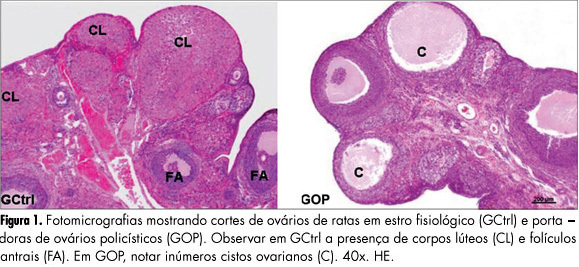
Summary
Revista Brasileira de Ginecologia e Obstetrícia. 2011;33(11):323-327
Summary
Revista Brasileira de Ginecologia e Obstetrícia. 2021;43(4):323-328
Complete hydatidiform mole (CHM) is a rare type of pregnancy, in which 15 to 20% of the cases may develop into gestational trophoblastic neoplasia (GTN). The diagnostic of GTN must be done as early as possible through weekly surveillance of serum hCG after uterine evacuation.We report the case of 23-year-old primigravida, with CHM but without surveillance of hCG after uterine evacuation. Two months later, the patient presented to the emergency with vaginal bleeding and was referred to the Centro de Doenças Trofoblásticas do Hospital São Paulo. She was diagnosed with high risk GTN stage/score III:7 as per The International Federation of Gynecology and Obstetrics/World Health Organization (FIGO/WHO). The sonographic examination revealed enlarged uterus with a heterogeneous mass constituted of multiple large vessels invading and causing disarrangement of the myometrium. The patient evolved with progressive worsening of vaginal bleeding after chemotherapy with etoposide, methotrexate, actinomycin D, cyclophosphamide and vincristine (EMA-CO) regimen. She underwent blood transfusion and embolization of uterine arteries due to severe vaginal hemorrhage episodes, with complete control of bleeding. The hCG reached a negative value after the third cycle, and there was a complete regression of the anomalous vascularization of the uterus as well as full recovery of the uterine anatomy. The treatment in a reference center was essential for the appropriate management, especially regarding the uterine arteries embolization trough percutaneous femoral
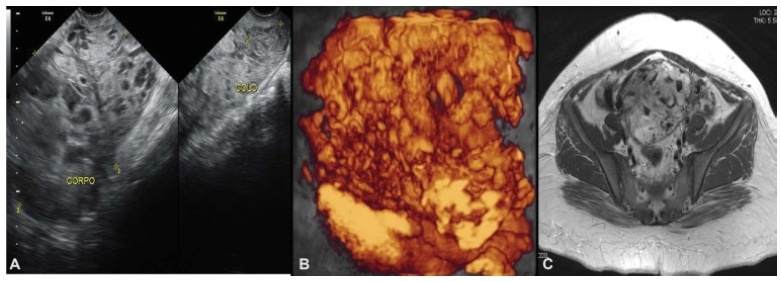
Summary
Revista Brasileira de Ginecologia e Obstetrícia. 2000;22(6):323-323
DOI 10.1590/S0100-72032000000600001
Summary
Revista Brasileira de Ginecologia e Obstetrícia. 2002;24(5):323-327
DOI 10.1590/S0100-72032002000500006
Purpose: to assess ovarian reserve by FSH determination on the 3rd day of the menstrual cycle compared to the clomiphene test and to correlate the results with the ovarian response to controlled hyperstimulation with gonadotrophins for in vitro fertilization. Methods: a total of 49 patients older than 30 years who had been presenting a clinical picture of infertility for at least 1 year were selected. All patients were evaluated for ovarian reserve by the clomiphene citrate test and 26 of them were later submitted to controlled ovarian hyperstimulation with gonadotrophins. Of these 26 patients, 18 showed a good response to ovarian hyperstimulation and 8 showed a poor response. Mean (+ SD) FSH values were calculated for the determinations on the 3rd and on the 10th day and for their sum in the group of patients who responded favorably to ovarian stimulation, and were later correlated with the ovarian response after gonadotrophin stimulation. Results: employing a FSH value > 16.1 IU/mL on the 10th day (mean plus 2 SD) for the prediction of a poor ovarian response in the clomiphene test, the sensitivity, specificity, and positive and negative predictive values of this parameter were 50, 100, 100 and 81.8%, respectively. Considering the clomiphene test to be positive when the sum of the FSH values determined on the 3rd and 10th day plus 2 SD was > 22.6 IU/mL, we obtained 62.5% sensitivity 100% specificity, 100% positive predictive value, and 85.7% negative predictive value. A single FSH determination of 10 IU/mL on the 3rd day of the cycle for the prediction of a poor ovarian response showed 87% sensitivity, 100% specificity, 100% positive predictive value and 94.7% negative predictive value. Conclusion: in the present study, a single FSH determination on the 3rd day of the cycle showed to be more sensitive than the clomiphene test for the evaluation of ovarian reserve.
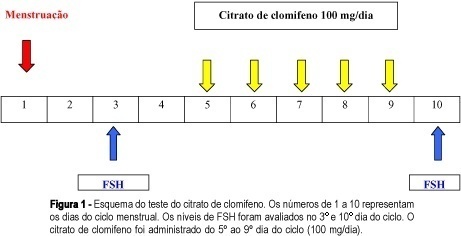
Summary
Revista Brasileira de Ginecologia e Obstetrícia. 2005;27(6):323-330
DOI 10.1590/S0100-72032005000600006
PURPOSE: to determine the validity of uterine artery Doppler velocimetry for the prediction of pregnancy complications in a population of low-risk nulliparae. SUBJECTS: a prospective study was conducted on 45 patients in their first pregnancy with no history of chronic diseases. Uterine artery Doppler velocimetry was performed between 24 and 26 weeks, with the determination of resistance index (RI), pulsatility index (PI), S/D ratio, and the presence or absence of incisure in the flow velocity wave. Data were analyzed by the Mann-Whitney test for non-parametric samples, and the Fisher exact test was used in the evaluation of the qualitative parameters. RESULTS: pregnancy complications were observed in twelve patients, with four cases of preeclampsia, one case of small for gestational age newborn (SGA NB), one case of SGA NB + preterm delivery (PTD), three cases of PTD, one case of fetal centralization, and two cases of presence of thick meconium in the amniotic fluid at the time of pregnancy resolution. We noted that RI (median 0.56 x 0.68), PI (median 0.98 x 1.29) and S/D ratio (median 2.2 x 2.9) were higher at the examination performed between 24 and 26 weeks in patients with complications and did not differ in preeclampsia and SGA cases. The presence of bilateral incisure showed 100 and 90% sensitivity, 60.2 and 62.5% specificity, 29.4 and 42,9% positive predictive value (PPV), and 100 and 95.2% negative predictive value (NPV) for the detection of preeclampsia or SGA and of any complication of pregnancy, respectively. An altered Doppler showed 83.3 and 83.3% sensitivity, 69.7 and 69.7% specificity, 33.3 and 50.0% PPV, and 95.8 and 92.0% NPV for the detection of preeclampsia or SGA and of any complication of pregnancy, respectively. CONCLUSION: high impedance indices and the presence of a bilateral incisure in the uterine arteries between 24 and 26 weeks of pregnancy seem to be good predictors of pregnancy and perinatal complications.
